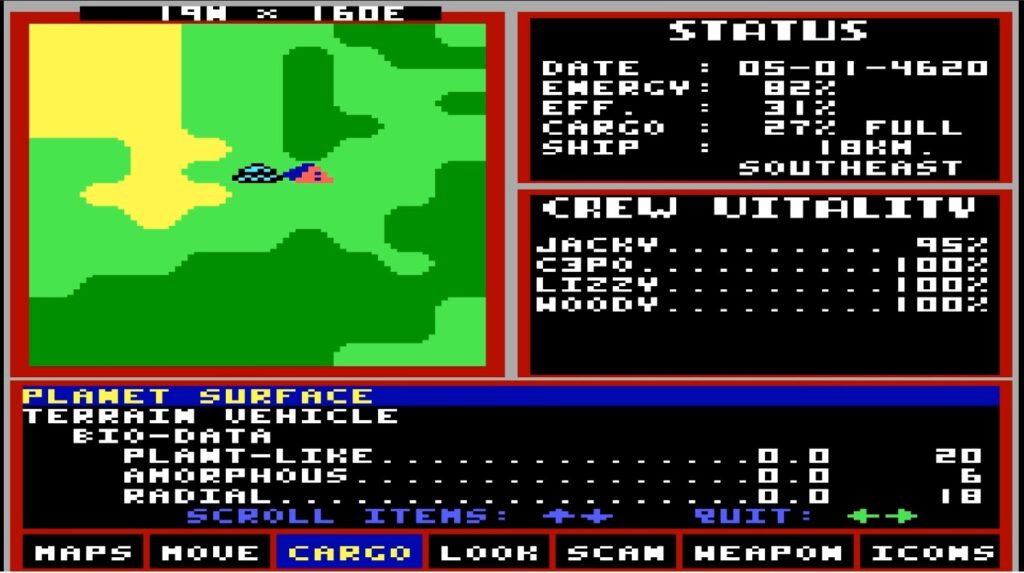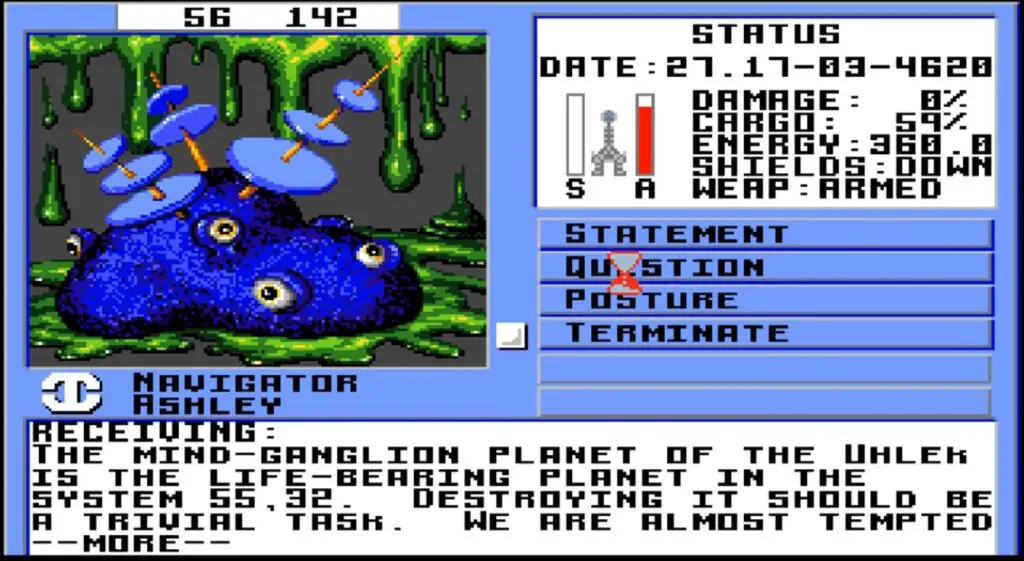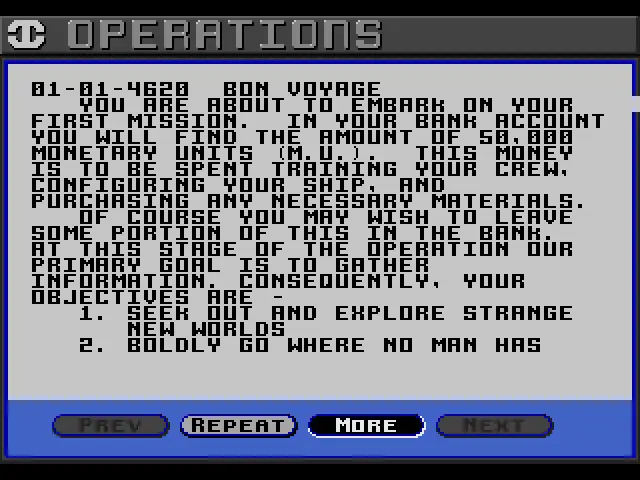They often say that media pioneers get the blame for everything that went wrong years later – yet no gratitude for their original achievements. It is, of course, mostly a stereotype. Still, it does seem to apply, in a way, to this particular project: strategic space simulation Starflight. Its influence on cosmic exploration games was massive; while its open-world nature has reached far beyond this genre. Even Mass Effect director Casey Hudson has cited it as a huge influence on the space RPG series. So, what happened? And why was this game so influential?
REACHING TO THE STARS
It was in the early 80s when Rod McConnell and Jim Yarborough were working on one specific idea. Their goal was creating a sort of open-ended space exploration experience; one that would feature both random encounters and resource collection. And, after founding their company – Binary Systems, they went straight to realizing their vision on Atari 800. There really was nothing like that at the time. The only similar project was Elite, and it was definitely a different experience. McConnell, along with programmer Alec Kercso, wanted to work on an entire universe of alien races – each with unique character and a deep narrative.

So, the developers went on, populating the universe with the various races. Once that was done, they then thought of each alien’s background and narrative. In a way, the main story came from the design of the aliens – not the other way around. But, with many other complex systems already in place, it soon dawned on the developers that the original Atari 800 would simply be unable to handle such an ambitious project. So, a few months later, they moved the game to the PC. Indeed, the first version of Starflight came out on MS-DOS in August 1986, almost four years after that initial concept. The title was also changed at the last minute; the original “Starquest” sounded a bit too much like Sierra‘s Space Quest.

DIPLOMACY IS THE KEY
Starflight starts with the main characters in a circular spaceship – ready to set off towards the stars. First, however, the player gather a team of different specialists – classic RPG style. These brave explorers are to discover what’s happening in the universe. The journey won’t be peaceful. Soon, it’ll be clear that their ultimate task is preventing a powerful foe from destroying all planets. Despite this, the adventure is entirely non-linear: it is up to the player where to go and what to do. The gameplay consists of exploring space; docking on planets; extracting precious minerals – vital for fuelling the ship; and interacting with the aliens. It is possible to fight anyone, but this isn’t the best strategy. Good communication is an essential skill here.

How aliens react to the player depends on the postures and dialogue choices. So much so that the programmers developed a specific AI for intergalactic communications. Greg Johnson calls the system EDLs – Emotional Disposition Levels. It consists of two factors, based on players’ decisions. The first is a short-term impression on the beings from other planets. The second is a long-term memory, which’ll linger for far more time in the aliens’ minds. Each member of the development team contributed something important to the project. So, you can’t attribute the final product to a single mastermind – but to the many great programmers working together.

With a full universe to navigate, Starflight is able to perfectly simulate the feeling of exploring the unknown. It’s a game that rewards careful planning. There are no weird difficulty spikes nor random impossible space battles. Well… except for one. There was an interesting copy protection system in the original. The player would be approached by the Interstellar police and asked a question, the answer to which is in the manual. Failure to do so would mean a pretty swift death (or arrest, which is a game over anyway).
HERE COMES THE TWIST
There are many innovations in Starflight. There is the incredible freedom in exploration, the in-depth alien interaction system – with a choice between diplomacy and war. However, perhaps the most revolutionary thing is how its overarching narrative concludes. I won’t spoil anything, for anyone who still wishes to play all these years later. Be sure, though, that the plot twist truly sheds a different light on everything the player has been doing up to that point. The way the results of the player’s action are, suddenly, seen from such a different perspective does indeed connect the game to Mass Effect – with its similar way of treating consequences.

A sequel followed the original – along with a huge series of conversions: from Commodore 64 to Amiga several years later. The most interesting of those was, perhaps, the last one – for Sega Mega Drive / Genesis. Its original designer was Vectorman developer Richard Karpp. This version of Starflight saw numerous improvements, as well as new features. Along with the expected graphical and sound updates, and additional weapons and gadgets, the player was now in control of landing on a planet – while its exploration via vehicle became much more realistic via weather conditions.
Today, every space exploration title, from No Man’s Sky to the very recent Out There: Oceans of Time, definitely owes something to this seminal 1986 masterpiece. Still, going back to the similarly-themed and older Elite, it does feel like Starflight is less remembered and appreciated. This is despite being successful at the time (there’s also the 1989 sequel, Starflight 2: Trade Routes of the Cloud Nebula). I can only hazard a guess as to why: perhaps it was the strange timing of the release. Also, with the original being PC-only, it might have missed on important audience, which the later conversions failed to re-capture. But, that’s just a theory, and it hardly matters. What is important is that this story is still here, ready to be experienced – the brilliant work of a well-knit team of visionary pioneers.







